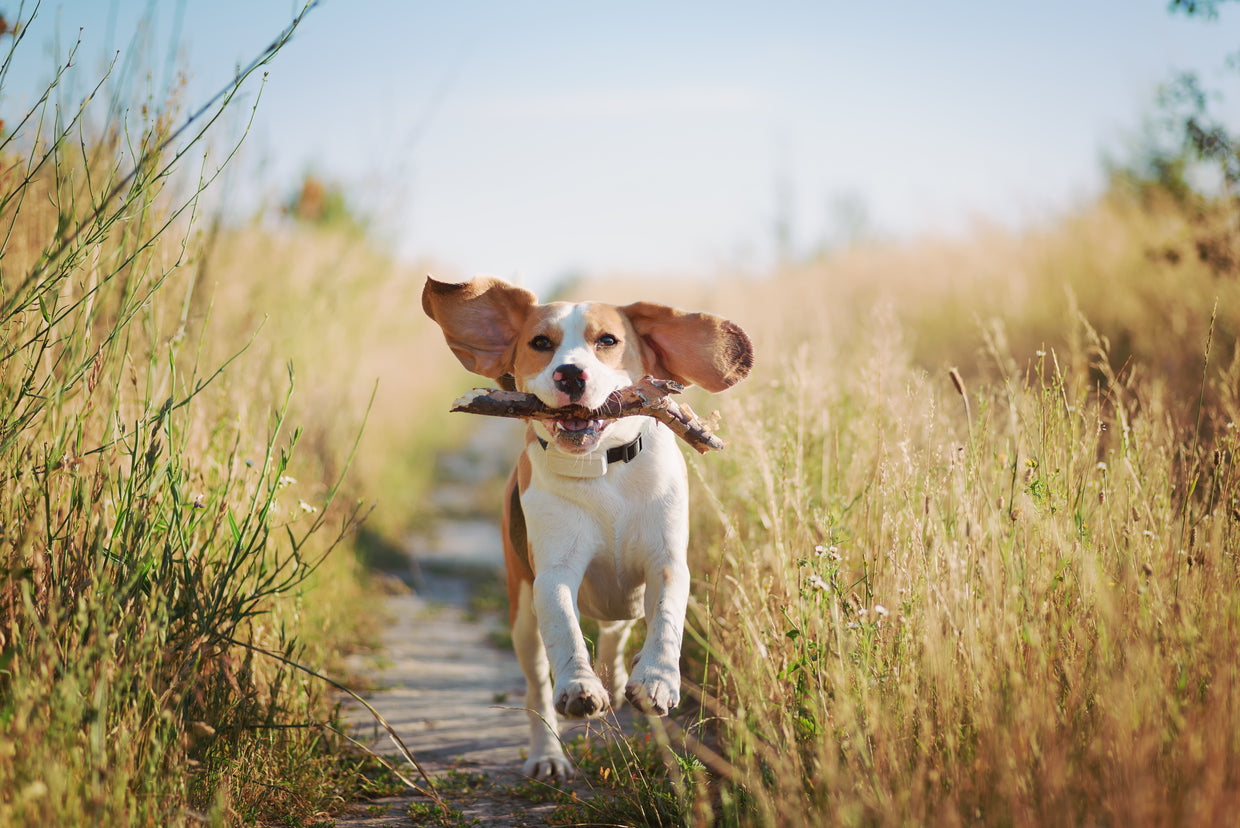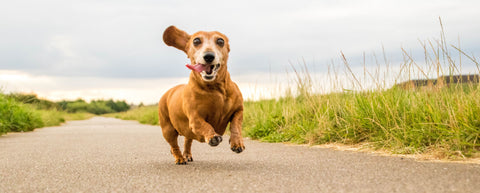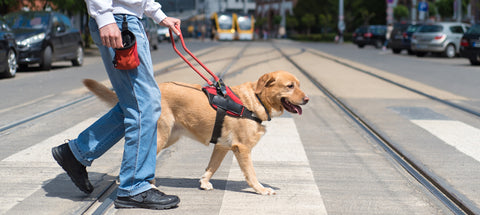Exercise is key to helping your dog live a healthy life. But, as with most things, moderation and understanding the right amount of exercise for your dog is just as important. Over and under-exercising can impact your dog’s mental and physical health, especially their joints, as well as their behavior in general.
Finding the balance can be tough, as the right amount of exercise is different for each dog and pet parent, but we do have some guidelines you can follow below.
What happens if you over/under-exercise your dog?
We all know that under-exercising dogs will impact their health. As with humans, regular exercise helps to maintain joint and heart health in your dog. It also keeps them at an appropriate weight for their breed and age, and helps to maintain muscle mass, supporting their joints more as they carry less of the load. Without regular exercise, your dog may develop issues with these parts of their body over time.
Exercise can be an excellent release for dogs as well! Walking outside can have a positive impact on your dog’s mental health and their behavior as a result.
However, while we all know our dogs love a zoom, they can push it too far with exercise. You need to understand your dog’s limits – some dogs may not appreciate a fast-paced run or a high-incline hike with you. Rigorous exercise can cause joint injuries or even heatstroke or heart attacks in obese dogs. If you find that your dog is overweight, don’t immediately start them on an intense regime – especially if they weren’t regularly exercising before. Your dog needs to build strength, so you should combine an appropriate level of exercise with a healthier diet and advice from your veterinarian.
So how do we know how much exercise our dogs need?

How old is your dog?
Depending on your dog’s age, they’ll need different amounts and types of exercise. A puppy and a senior dog will have vastly different needs, so you should acknowledge your dog’s ability level.
Puppies (over 10 weeks old, at least):
• Tend to have more energy and need socializing regularly
• Must be fully vaccinated before they can exercise outside
• Lots of zoomies followed by naps
• Short bursts of exercise throughout the day (walks/play sessions)
• Play dates and visits to the dog park will help them learn how to be around other dogs
Adult dogs:
• Will know their own limits but can exercise with ease
• Fully grown joints and bones
• Know what exercises they enjoy (playing/swimming/walking etc.)
• Mix it up – try lots of new activities that can be fun for both of you
• May start needing additional joint support to help maintain joint health for longer
• Regular exercise less often in the day than a puppy (depending on breed) but can be longer
Senior dogs:
• May need a gentler type of regular exercise (short walks/gentle play/light swimming)
• Comfort over everything – if your older dog is limping or is significantly slower, it’s time to re-evaluate what they need
• Need additional joint support designed for senior dogs
• They should still exercise regularly – keeps joints from stiffening, but don’t force them to if they are resistant
• Ask your vet if you are noticing signs of pain what exercise they recommend

What breed is your dog?
Your dog’s breed will tell you a lot about the amount and type of exercise they should do. Some breeds are far more athletic than others, needing more intense or frequent workouts – a Labrador and a Bulldog will have hugely different needs and abilities. Particularly with flat-faced breeds, lots of walking without breaks or exercise in hot weather will be hard for them, as they can’t breathe as well as dogs with longer snouts.
Dog sizes will also affect how much exercise they can do. Larger dogs tend to find rigorous exercise harder than a medium-sized or more agile dog, and over-exercising can lead to joint concerns in the future.
What are your favorite exercises to do with your dog? Tell us over on our Instagram and Facebook pages and send us your workout photos!










